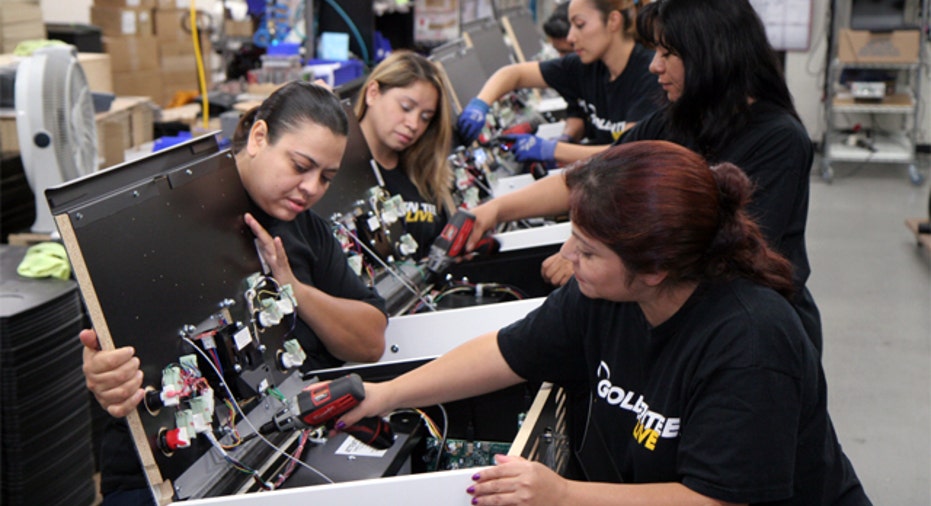Employers Added 215,000 Jobs in March

U.S. employment increased solidly in March and wages rebounded, signs of economic resilience that could allow a cautious Federal Reserve to gradually raise interest rates this year.
Nonfarm payrolls increased 215,000 last month, the Labor Department said on Friday. Data for January and February was revised slightly down to show 1,000 fewer jobs created than previously reported.
Average hourly earnings increased seven cents. While the unemployment rate rose to 5.0 percent from an eight-year low of 4.9 percent, it was because more Americans continued to return to the labor force, a sign of confidence in the jobs market.
The labor market has largely shrugged off slowing global economic growth, a robust U.S. dollar that has hurt manufacturing exports, and cheap oil prices, which have hit energy sector profitability.
Fed Chair Janet Yellen said on Tuesday that slowing world growth and lower oil prices posed a downside risk to the U.S. economic outlook, adding that she considered it appropriate for policymakers to "proceed cautiously in adjusting policy."
Fed officials last month downgraded their economic growth expectations and forecast only two more rate rises this year. The U.S. central bank raised its benchmark overnight interest rate in December for the first time in nearly a decade.
Financial markets have almost priced out the likelihood of a rate hike at the Fed's June policy meeting and see a roughly 47 percent chance of an increase in November and a 57 percent probability at the December meeting, according to CME FedWatch.
The employment report came on the heels of recent data showing sluggish consumer spending and weak business investment on capital in the first two months of the year, as well as some deterioration in the international trade balance.
Those reports prompted economists to slash their first-quarter GDP growth estimates to as low as a 0.9 percent annualized pace from as high as a 2.0 percent rate. The economy grew at a 1.4 percent rate in the fourth quarter.
WAGES BOUNCE BACK
Though employment gains have slowed after averaging 282,000 jobs per month in the fourth quarter, there is little labor market strain from the global slowdown, which helped to ignite a massive stock market sell-off at the start of the year.
Wages increased last month, with average hourly earnings rising 0.3 percent. That lifted the year-on-year earnings gain to 2.3 percent from 2.2 percent in February.
Economists say a growth rate of between 3.0 percent and 3.5 percent in wages is needed to lift inflation to the Fed's 2.0 percent target. Though the Fed's preferred inflation measure is currently at 1.7 percent, Yellen has expressed skepticism over the sustainability of gains, citing transitory factors.
There were improvements in other labor market measures. The labor force participation rate, or the share of working-age Americans who are employed or at least looking for a job, rose a tenth of a percentage point to 63 percent, the highest level since March 2014.
Employment gains in March were broad-based. But manufacturing lost 29,000 jobs, the largest number since December 2009, despite signs of stabilization in the factory sector.
Mining purged 12,000 more jobs last month. Mining payrolls have declined by 185,000 jobs since peaking in September 2014, with three-fourths of the losses in support activities.
Oilfield service providers Schlumberger and Halliburton Co have announced thousands of job cuts as they try to cope with reduced profits from a prolonged slump in oil prices.
Construction payrolls rose 37,000, increasing for a ninth straight month. Retail employment surged 47,700 after rising strongly in January and February despite weak sales. Government payrolls increased 20,000 last month.
(Reporting by Lucia Mutikani; Editing by Dan Burns, Clive McKeef and Paul Simao)



















